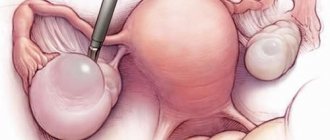YOU MAY ALSO LIKE
Newborn sleep
When do babies start sleeping through the night?
Surely you have heard about sudden infant death syndrome - SIDS, which worries many parents of young children. The causes of SIDS are unknown. However, there are steps you can take to help your baby sleep safely and prevent SIDS. In this article, you will learn more about what sudden infant death syndrome is, what the risk factors may be, and what you can do to create the safest possible environment for your baby.
When does the risk of SIDS decrease?
A natural question for all parents: when can you stop worrying about sudden infant death syndrome? Most cases of SIDS occur in the first few months of a baby's life, with babies between two and four months of age most vulnerable. The risk of sudden infant death syndrome decreases significantly once a baby reaches six months and begins to roll over, which means he has better control of his neck and head.
Safe sleep: preventing sudden infant death syndrome
It is absolutely essential to know how you can prevent SIDS. Here are some ways to keep your child safe:
- Place your baby to sleep on his back.
Do this every time until the child is one year old, and tell everyone who is looking after him (regardless of whether it is a nap or a night nap). Some babies roll over on their side or stomach when they sleep after being put to sleep on their back. According to experts, this does not pose a danger if the child can already roll back and forth on his own.
- Remove all unnecessary items from the crib.
Make sure the mattress is firm and fits perfectly without leaving any gaps on the sides. Avoid extra blankets, pillows, blankets or any shock absorbers. Just a tightly pulled sheet, and no folds. Never leave toys in the crib, even soft teddy bears. Any extra items in the crib can prevent your baby from breathing normally.
- Move your baby to a hard surface.
Sometimes a baby may fall asleep in a car seat, stroller, or sling. In this case, you need to move him to a hard surface to sleep as soon as possible. Never leave your baby to sleep on a waterbed or pillow.
- Make sure your child does not overheat.
Overheating increases the risk of sudden infant death syndrome. The baby's head should not be covered with anything when you put him to sleep. The temperature in the room should be comfortable and it should not be too hot for you. Dress your child at most one layer warmer than you are wearing yourself, and do not cover him with a blanket. Instead, you can use a sleeping bag without a hood or sleepsuits with a closed toe. If your baby's head or chest is hot and sweaty to the touch, he is too hot.
- Install a crib in your bedroom.
According to expert recommendations, it is better for your baby to sleep in your room, but in his own crib. If possible, let him sleep with you for up to a year, and it is good if the crib or cradle is at arm's length from your bed.
- Do not put your child to sleep in your bed.
It is not recommended to sleep in the same bed with your baby - this increases the risk of SIDS, because you can accidentally crush the baby in your sleep. In addition, the child may become entangled in your bedding.
- Breastfeed your baby.
If possible, breastfeed your baby for at least the first six months. Research shows that this significantly reduces the risk of sudden infant death syndrome.
- Place your baby on your chest.
This skin-to-skin contact is very beneficial for the baby. You can latch on to your baby while you breastfeed, bottle-feed, or just any time of the day. This is also recommended for dads.
- Do not rely on the breathing monitor.
Experts advise against the use of such monitors and other similar devices that purport to reduce the risk of SIDS because their use has not been shown to be effective in preventing SIDS.
- Use a pacifier.
Sucking on a pacifier during the day or night may reduce the risk of SIDS. It is important that the pacifier is not on a rope or cord - or in any way fixed to clothing. If you are breastfeeding, wait until your baby is three to four weeks old and you have established breastfeeding before offering him a pacifier. If the pacifier falls out of your baby's mouth during sleep, do not try to put it back.
- Give your baby all necessary vaccinations.
Several studies show that vaccinations reduce the risk of sudden death syndrome.
- Don't smoke near your child.
And also do not smoke in the car or at home. Try to keep your child away from smoking areas.
- Make sure the crib and other baby equipment are in good working order.
The cradle, crib, stroller and playpen must comply with safety standards. They should not be broken, and if you borrow them from someone or give them to you after use, check them for safety and thoroughly sterilize them.
- Place the baby on his stomach.
Place your baby on his tummy when he is awake - this strengthens his neck and back. But always watch your baby so that he does not fall asleep in this position.
Remember the three main rules for safe baby sleep:
- the baby should sleep alone;
- the baby should sleep on his back;
- The baby should sleep in his own crib.
Sudden death syndrome. What parents should know
28.Jun.2021
Significant changes occur in the body, especially in the respiratory, cardiovascular and nervous systems. At the same time, the regulatory functions of the endocrine and nervous systems are not yet mature enough and various external factors can have a significant impact on the child’s body. This is why the largest number of child deaths are recorded in the first year of life.
Infant mortality—the death rate of children under one year of age—is the main component of child mortality. Identifying pathology and prescribing timely treatment is the prerogative of neonatologists and pediatricians. But in recent years, according to statistics, cases of death of children from non-medical causes, such as death from exposure to external factors, sudden infant death syndrome, death from suffocation and asphyxia, have become more frequent.
Sudden infant death syndrome (SIDS) and death of children from external causes are the leading causes of death in children aged 1 month to 1 year. Sudden infant death syndrome is not a disease or painful condition. The fact that this happens without warning, without any prerequisites, makes sudden infant death syndrome a difficult, unbearable experience for parents.
What causes sudden death syndrome?
Scientists have studied a significant number of sudden infant death syndrome occurrences over the past 40 years, but a clear answer to this question has not yet been found. Most experts believe that this syndrome affects children who have a number of vulnerability factors: immaturity, abnormal heart function, diseases of the respiratory system, immaturity of the arousal system, low birth weight, external influences such as sleeping on the stomach or on a soft bed in during the critical period of their development. Factors that increase the risk of SIDS: Premature birth or very low birth weight (less than 1500g). Mother's age is less than 20 years. Having many children, especially if the children are close in age, the risk of SIDS increases with each new child you have. The risk of SIDS is higher in twins, even if they were born at term and were not low birth weight. The risk of SIDS is increased in siblings (under 1 year of age) of a child who dies of SIDS. Children who have experienced life-threatening conditions such as respiratory arrest, sudden pallor or blue discoloration with loss of muscle tone, requiring resuscitation. Male gender of the child. Male babies of all nationalities die from SIDS 30–50% more often than girls.
How to prevent sudden infant death syndrome?
You can significantly reduce the risk of SIDS by following simple recommendations developed by pediatric societies around the world. Following these simple rules for safe baby sleep can significantly reduce not only the risk of SIDS, but also death from external causes, such as suffocation, obstruction of the airways, or getting the baby's head stuck between different objects.
Rules to follow:
Put your baby to sleep on his back! If your baby is strong enough to roll over on his stomach on his own, don't worry about it while he sleeps. It is enough to make sure that there are no soft objects in the cradle or crib where the child sleeps that the child can bury his face in - this increases the risk of SIDS or suffocation. Attention! Do not use towels or other types of padding to try to place the baby on his or her back, as they may pose a suffocation hazard to the baby.
Sleep in the same room, but not in the same bed! It is better if the child sleeps in the same room with you for the first six months. Don't put your baby in bed with you - this increases the risk of SIDS, even in non-smoking mothers. Putting a baby into bed with you can also lead to suffocation, obstruction of the airways, and pinching of the child. Do not smoke! Almost all studies have determined that smoking during pregnancy increases the risk of SIDS. And protect your child from cigarette smoke. Do not drink alcohol or illegal substances during pregnancy!
Vaccinate your child! Immunoprophylaxis of infectious diseases by vaccination according to the recommended schedule can reduce the risk of SIDS by up to 50%. If possible, breastfeed your baby exclusively. Exclusive breastfeeding for 4-6 months reduces this risk of SIDS by approximately 70%.
Department of Prevention of the Institution "Nyagan City Children's Clinic"
Risk factors and causes of SIDS
It is not known exactly what causes SIDS, but certain maternal, physical, general, and sleep factors can make the baby more vulnerable and increase the risk of sudden infant death syndrome.
Factors associated with sleep organization
Sleeping conditions that may increase the risk of sudden infant death syndrome:
- Sleep on your stomach or side.
Babies who sleep on their stomach or side may have more difficulty breathing than those who sleep on their back.
- Sleep on a soft surface.
Sleeping on a feather bed, soft mattress, or waterbed can cause pressure on your baby's airways.
- Sleeping in bed with others.
Sleeping with parents, siblings or pets increases the risk of SIDS due to the potential risk of suffocation.
- Overheating.
If your baby is hot while sleeping, this may increase the risk of sudden death syndrome.
Maternal risk factors
Even before the baby is born, a mother may unwittingly increase the risk of SIDS. Maternal factors may influence sudden infant death syndrome if the mother:
- under 20 years old;
- smokes cigarettes;
- uses alcohol or drugs;
- Didn't take good care of your health during pregnancy. This is why it is so important to schedule and visit your doctor regularly before giving birth.
Physical factors
Here are some of the physical risk factors that can increase a baby's risk of SIDS:
- Disorders of the brain and central nervous system.
In some babies, the area of the brain responsible for breathing and waking up after sleep is underdeveloped, making them more vulnerable to sudden death syndrome.
- Low birth weight.
Premature babies and twins sometimes do not have time to develop full control of breathing and heart rate, which also makes them vulnerable to SIDS.
- Respiratory infection.
If your baby has recently had a cold, this can also cause breathing problems and increase the risk of sudden infant death syndrome.
General risk factors
Although the exact cause of sudden infant death syndrome is unknown, the following factors generally increase the risk:
- Floor.
Boys are at slightly higher risk for SIDS.
- Age.
Babies are most vulnerable between the ages of two and four months, although in general children under one year of age are at risk.
- Race.
Children of the Negroid and Mongoloid races are more at risk.
- Family history.
The risk increases if cousins or siblings have died from sudden infant death syndrome.
- Smoking tobacco.
Children whose family members smoke are at greater risk.
- Premature birth
and low birth weight.
If the baby was born prematurely and/or weighs less than normal, its risks increase.
FAQ
- Steps to keep your baby safe and reduce the risk of sudden infant death syndrome:
Place your baby to sleep on his or her back; - the mattress for sleeping should be quite hard;
- do not overheat the child;
- install a crib in your bedroom;
- breastfeed if possible;
- practice skin-to-skin contact;
- do not rely on breathing monitors;
- give your baby a pacifier;
- follow the vaccination schedule, get vaccinated on time;
- do not smoke near the baby;
- Place your baby on his tummy when he is awake.
The risk of sudden infant death syndrome decreases significantly after the baby reaches six months of age.
Sudden infant death syndrome is a concern for almost all parents. Remember that SIDS is very rare, and if you carefully follow all of these precautions during the first year of your baby's life, the risk of this syndrome can be further reduced.
How this article was written The information presented in this article is based on expert advice published by trusted (medical and government) sources such as the American Pediatric Association and the American College of Obstetricians and Gynecologists. A complete list of links to sources used to write this article can be found at the end of the article. The information on this page is not a substitute for professional medical advice. Always consult your doctor for diagnosis and treatment.
SIDS
Our recent quiz in stories showed that not everyone knows/understands how to organize a baby’s sleep and what affects his safety. In addition, there have been questions about what SIDS . We decided to publish a post on this topic again.
Sudden infant death syndrome (SIDS) is a medical term. It is registered when all possible other causes of death of the child have not been established. "Diagnosis by exclusion."
SIDS is not the same as choking or aspiration of vomit; SIDS is not caused by vaccines, immunizations, or shots; SIDS is not contagious; SIDS is not the result of child neglect or abuse.
There is no standardization of this diagnosis. SIDS cannot be completely prevented. However, there are a number of studies of cases where the cause of death was SIDS. They understand the circumstances and surroundings at the time of the incident. Thus, we can talk about reducing the risk of SIDS and forming recommendations on this issue.
The syndrome can occur at any time during the first year of a child's life . Most (90% of all) cases of SIDS occur before the baby is 6 months old. Most of them occur in children aged 1 to 4 months.
Babies are at higher risk of SIDS if they:
▶ They sleep on their stomach (until they have learned to freely turn from their stomach to their back and back); ▶ The child sleeps on a soft surface. For example, an adult mattress, sofa, chair, or any other soft covering; ▶ Sleeps on or under a soft, airy bed (blanket, blanket); ▶ Too hot while sleeping; ▶ Exposure to cigarette smoke in the womb or in the environment after birth. For example, at home, in a car, in a bedroom or in other rooms; ▶ Sleeps in an adult bed with parents, other children or pets.
This situation is especially dangerous if:
An adult smokes, has recently consumed alcohol, or is tired. The child is covered with a blanket or rug. The baby sleeps with several bedmates. The baby is between 11 and 14 weeks old.





